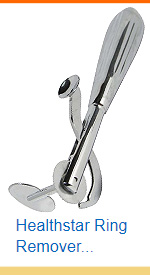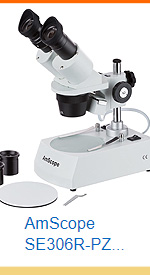MY $2,000 DIAMOND HAS FLAWS!
SHOULD EXPENSIVE DIAMONDS HAVE FLAWS AND CHIPS?
This post contains affiliate links. If you use these links to buy something I may earn a commission. Thanks! As an Amazon Associate I also earn from qualifying purchases.

Even though I answered this in a recent question and answer sent in by Sarah (questions and answers) I thought I would delve a little deeper in the subject because it’s a great topic and it’s one that provokes many questions and concerns about jeweler ethics and diamond fraud.
Chipped and flawed…
Should an expensive diamond engagement ring be sold that’s cracked or chipped?
“It’s a big purchase!”
Say you spend $2,000 or $6,000 on a diamond… should it have big black spots?
Most would think not!
We’re talking thousands here…
Money = Perfection, right?
Many think that if you spend a lot of money for a diamond then that diamond better be perfect.
It’s not like we’re spending $200…
After spending a ton of money, you shouldn’t get home and discover a crack hidden underneath a prong (which is actually the mark of a good jeweler by the way).
Is this fraud?
It’s cracked!!!
No! It’s not fraud in the least.
People think expensive diamonds should be flawless, but that thinking is, well, flawed! They know little about diamonds, quality, and need a quick training course about clarity and price.
It’s true. So before you point your finger at the jeweler that sold you the ring and cry “thief“, look in the mirror and ask yourself “Did I really know what I bought?” “Did I understand what clarity was?” “Did I learn all about quality and how it affects the price of a diamond?” Chances are: NO!
A lot of things make up price…
The price of a diamond is a combination of many things; cut, color, clarity and carat weight (called the 4C’s).
The 4C’s help determine what the price of a diamond will be. Which means, a $2000 diamond can have huge cracks, black spots, nicks, clouds, eye-visible flaws and big inclusions.
Yes, it most certainly can.
In fact, a $6,000 diamond can as well. And even a $100,000,000 diamond can.
The diamond you bought could be large and expensive; the color could be pure white; the cut could be perfect as well…
But what about the clarity?
Chips, cracks, flaws and blemishes are all listed under clarity.
You have to look at everything; the big picture. Unless you truly consider all that makes up the price of a diamond, then you can never really determine its value and whether or not you were “taken“.
The biggest concern is clarity:
Clarity just happens to be the biggest concern to many because it’s the one category that people can see with their bare eye. If it’s got a huge nick in the side of it, you can not only see it, but feel it with your fingernail.
A lot of people don’t notice these in the store. They’re excited and happy about buying a diamond ring. They only stop to look closer at the diamond later and that’s when they start seeing things.
Trust me, those flaws were always there. Those black spots that stand out like a sore thumb were there. And once you see them, you can’t stop staring at them. But know this, they didn’t magically grow and become visible after you bought it. They were there. You just didn’t look at the diamond good enough. Which is not a good lesson to learn. But you have to be observant. Microscope it. See it!
If your diamond was sold as an SI2 (or even SI3) I1, I2 or I3, then you will be able to see eye-visible inclusions. That’s almost a guarantee.
That’s what lower clarity diamonds bring… flaws that you can see even without a 10x jeweler’s loupe.
You’ll have to move up the clarity chart
Unless you move up the clarity grades to an SI1 grade or higher (like VS, VVS or Flawless), you are going to get flaws.
Sometimes a lot of them.
It’s a fact. It doesn’t matter how much you spend, or how big the carat weight is (by the way, inclusions are easier to see in larger diamonds anyway), if you buy a clarity that’s not high, you’re buying flaws, cracks, nicks, chips, pepper and clouds.
It’s not “You get what you pay for“, it’s “You get what clarity you paid for“.
Big difference.
Don’t think “I spent $3,000 on a diamond ring and the jeweler gave me a cracked diamond“.
Think “I spent $3000 on a diamond with a low clarity“.
You’ll have to buy better.
That’s the real issue.
Take the time to learn.
It’s all because you didn’t take the time beforehand to learn about clarity.
So please learn what I clarity means.
Learn that you can still see inclusions in SI2 diamonds (with the bare eye).
Learn how to buy a loose diamond.
Protect yourself.
Study diamonds.
Know what you’re dealing with.
Read all about the 4C’s. Learn about cut, color, clarity and carat weight.
Don’t buy the diamond without looking at it under a microscope.
Don’t buy bad quality then point your finger at the jeweler. It’s not their fault.
Take the time to educate yourself.
If you’re buying a diamond, then try to get a clarity of at least SI1 or higher (like these diamonds here).
Get a color of G-H or higher as well.
Don’t let horrible flaws stand in your way of owning a beautiful diamond ring.
Study up.
Protect yourself.
The best way to protect yourself from buying a diamond with a crack in it is to look at the diamond (always buy loose, not mounted diamonds) under a scope first.
Identify the diamond’s flaws, cracks and chips. Look at the diamond plot (on a GIA diamond report), and then make a decision based upon that quality.
Learn to say “no” before you make that expensive purchase.
Shop smart.
And there’s no flaw in that.
Cheers! :)


















Leave a comment